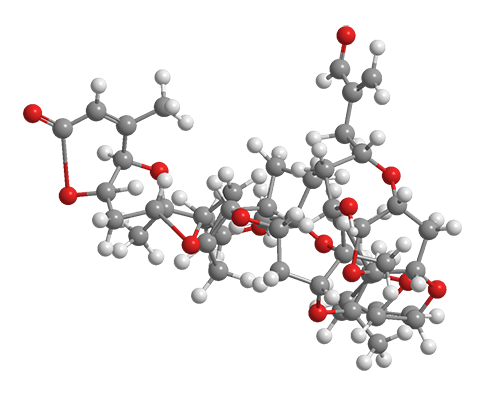What molecules are we?


Brevetoxins are a family of complex polycyclic polyethers that are produced by the “red tide” alga Karenia brevis that grows in the Gulf of Mexico. Brevetoxins are often abbreviated PbTx, which derives from their former designation Ptychodiscus brevis.
Brevetoxins come in two basic structures, type A and type B. Each type contains several specific compounds that are differentiated at the J-ring in PbTx-A and at the K-ring in PbTx-B. The images show the structure of one of the most common brevetoxins, PbTx-2, a member of the PbTx-B structure type.
Brevetoxin nomenclature is confusing at best. PbTx-2 is often called brevetoxin B even though there are several other type B structures. PbTx-8, also in the B group, was once referred to as brevetoxin C.
As indicated in the hazard information table, brevetoxins are truly toxic. They have been responsible for many fish, mammal, and mollusk kills in the Gulf; and tainted seafood has caused widespread food poisoning in humans. This year saw an especially virulent K. brevis bloom, especially off the coast of Florida.
Brevetoxin PbTx-2 hazard information
| GHS classification*: acute toxicity, oral, category 2 | |
| H300—Fatal if swallowed | |
| GHS classification: acute toxicity, deermal, category 2 | |
| H310—Fatal in contact with skin | |
| GHS classification: acute toxicity, inhalation, category 2 | |
| H330—Fatal if inhaled | |
*Globally Harmonized System of Classification and Labeling of Chemicals. Explanation of pictograms.
Brevetoxin PbTx-2
fast facts.
| CAS Reg. No. | 79580-28-2 |
| Empirical formula | C50H70O14 |
| Molar mass | 895.08 g/mol |
| Appearance | White solid |
| Melting point | ≈270 ºC (dec.) |
| Water solubility | Soluble |
MOTW update
L-Alanine and L-serine were the Molecules of the Week for October 29, 2018. They, along with glycine and L-proline, are the chief amino acids that make up spider silk proteins. In the past month, chemists at San Diego State University and Northwestern University (Evanston, IL) discovered that before spiders spin their silk, they store the silk proteins in complex nanoparticles.

Learn more about this molecule from CAS, the most authoritative and comprehensive source for chemical information.
Molecule of the Week needs your suggestions!
If your favorite molecule is not in our archive, please send us a message. The molecule can be notable for its current or historical importance or for any quirky reason. Thank you!
Stay Ahead of the Chemistry Curve
Learn how ACS can help you stay ahead in the world of chemistry.

